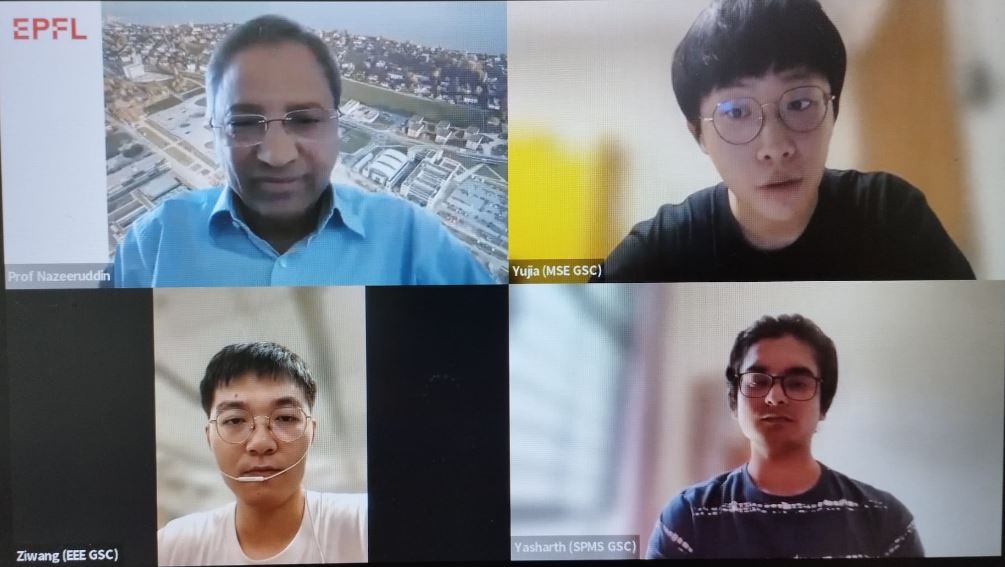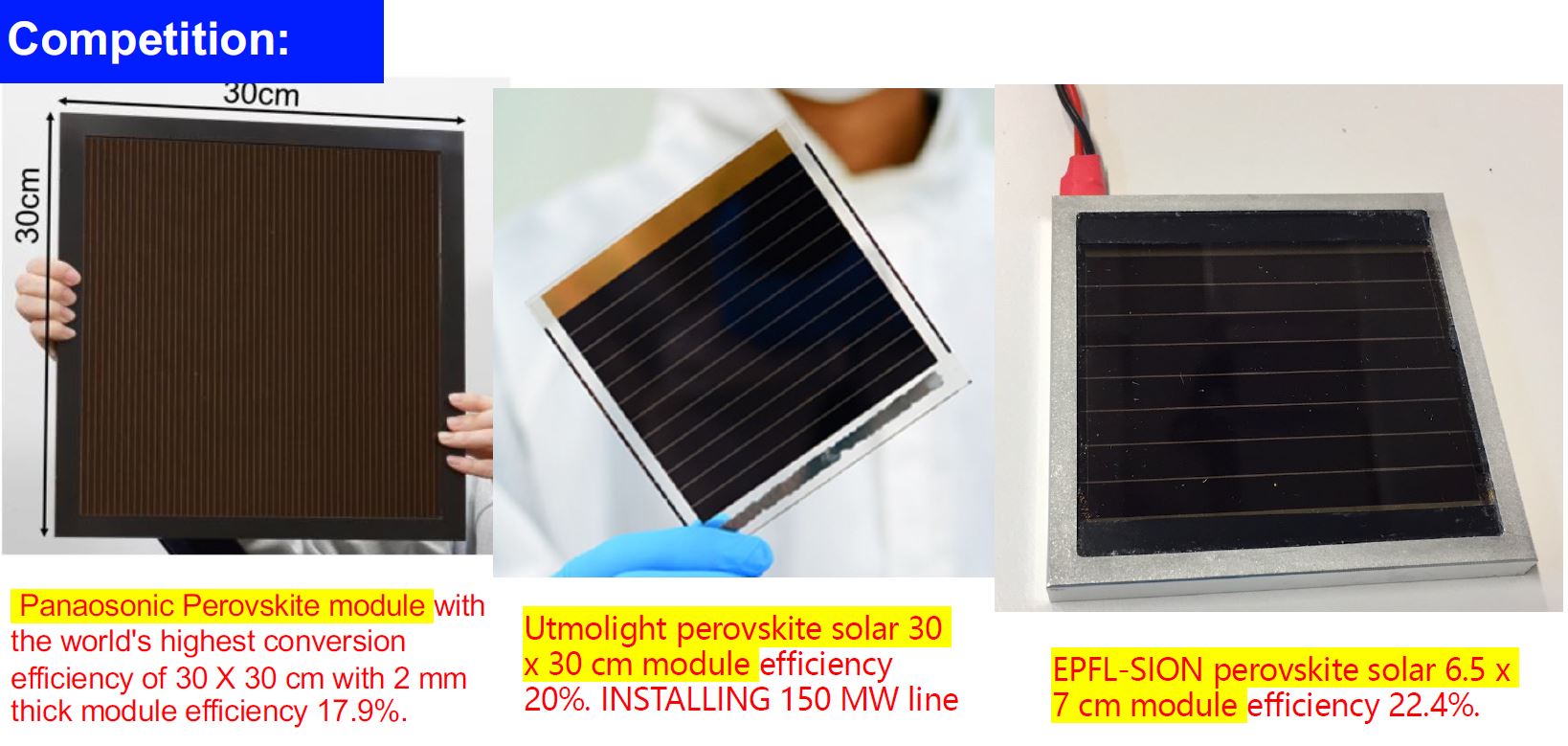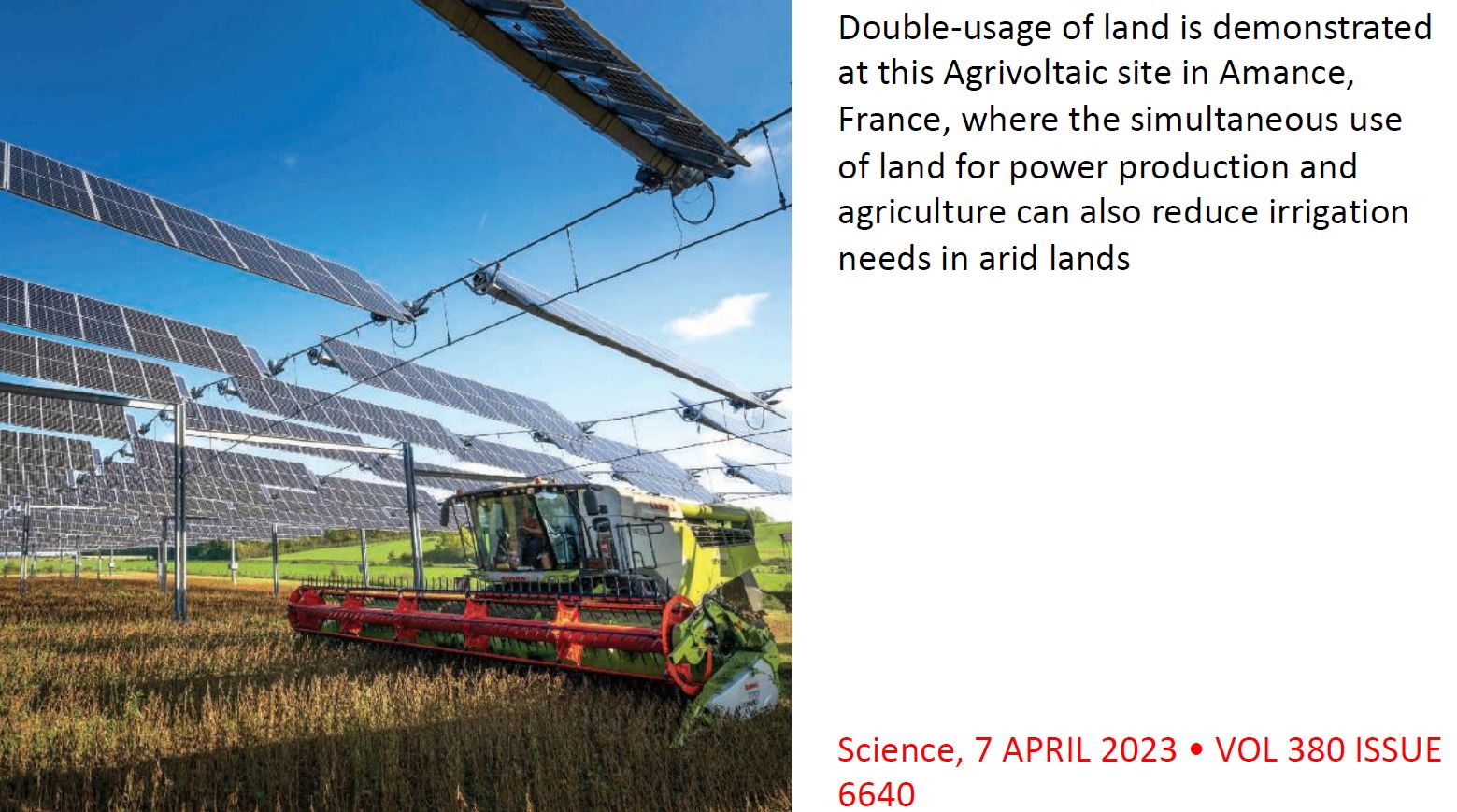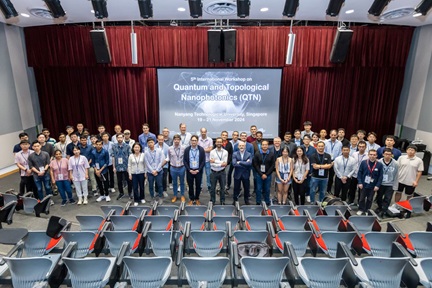Stable and Efficient Perovskite Solar Cells and Modules by Interface and Compositional Engineering by Prof Mohammad Khaja Nazeeruddin
IAS STEM Graduate Colloquium Jointly Organised with the Graduate Students' Clubs
On 4 October 2023, the IAS and Graduate Students’ Club of EEE, MSE and SPMS jointly organised the STEM Graduate Colloquium featuring
Emeritus Professor Mohammad Khaja Nazeeruddin from the École polytechnique fédérale de Lausanne (EPFL).
The webinar, aptly named "Stable and Efficient Perovskite Solar Cells and Modules by Interface and Compositional Engineering," served as an enlightening exploration of the intricate world of perovskite solar cells.

The colloquium started with Prof Nazeeruddin elucidating the pivotal role of ionic liquids in augmenting device stability. He expertly showcased a normalised PCE-time graph, distinguishing between 1% ETI doping and a reference sample. With an academic touch, he underscored the importance of the molecular structure of ETI, referencing Rui et al., 2019 from Advanced Functional Materials.
Journeying further into the essence of the topic, the professor provided profound insights into the compositional intricacies of the perovskite layer. He highlighted the advantageous effects of specific ionic compounds on key device performance metrics, such as Voc, Jsc, FF, and PCE. A significant citation to a recent study in Cell Reports Physical Science marked this discourse.
The structured webinar's agenda covered an array of topics, encompassing the compositional engineering of the perovskite layer, intricate approaches to interface engineering, the potential of charge transporting materials, the synergy observed in Si/Perovskite tandem solar cells, and a pragmatic overview of cost structures in the field.

Highlighting the practical aspects and implications of his research, Prof Nazeeruddin delved into topics like the dynamics of establishing solar farms, focusing on facets such as investment, land prerequisites, and maintenance costs, notably for budding green energy startups. Additionally, discussions on the optimal ratio considerations for TiO2/SnO2 composite structures, employed as charge transporting materials, further enriched the seminar.
Drawing towards a conclusion, the colloquium was adorned with an illuminating Q&A session. Here, a plethora of queries were addressed, ranging from the intriguing concept of integrating perovskite within indoor ventilation devices to detailed deliberations on the correlation between halide choices and efficiency in perovskite solar cells.
With its wealth of knowledge and rigorous academic insights, the webinar stood as a testament to the burgeoning interest and advancements in the domain of perovskite solar cells. Prof Mohammad Khaja Nazeeruddin's compelling delivery, combined with the intricate details of the research, resonated with both academic and industry participants, emphasising the need for sustained exploration and collaboration.

"Prof Nazeeruddin is a great communicator of scientific concepts. His presentation style is engaging while also being very nuanced." - Daniel Kong Wei Ming (NTU School of Humanities PhD student)
"The potential of this new material for utility scale application." - Delio Perez (Research Engineer, Solar Energy Research Institute of Singapore at NUS)
"The cost comparison caught my eye because that is not usually addressed in colloquium in such great depth but here it was and I greatly appreciated that."
-
Avani Gupta (CCEB MSc student)
"As a PhD student, I think this colloquium gave us a very good introduction and provided many insights to the business fields" - Wenhan Yu (Graduate College SCSE)
Written by Lu Xinpei | EEE Graduate Students' Club














/enri-thumbnails/careeropportunities1f0caf1c-a12d-479c-be7c-3c04e085c617.tmb-mega-menu.jpg?Culture=en&sfvrsn=d7261e3b_1)

/cradle-thumbnails/research-capabilities1516d0ba63aa44f0b4ee77a8c05263b2.tmb-mega-menu.jpg?Culture=en&sfvrsn=1bc94f8_1)






